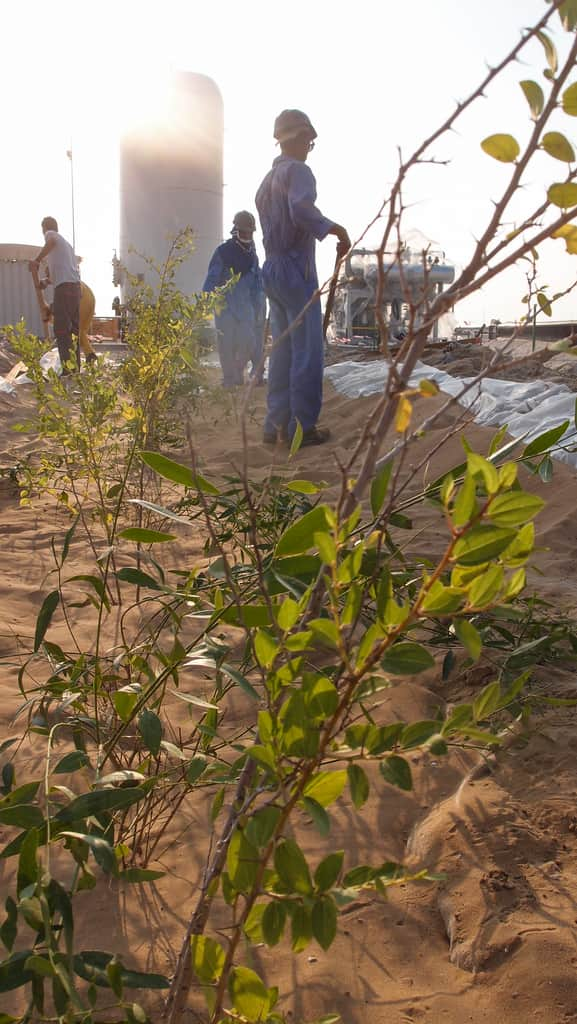
The Sahara Forest Project (SFP) in Qatar, is a combination of environmental technologies to enable restorative growth, defined as re-vegetation and creation of green jobs through profitable production of food, freshwater, bio fuels and electricity. This concept might be the solution for the world’s hot deserts.
In 2009, The Sahara Forest Project concept launched as a novel way of greening the deserts by bringing environmental technologies together inspired by bio mimicry. In 2012, an agreement was signed between Yara, Qafco and The Sahara Forest Project under the patronage of the Norwegian Prime Minister HE Jens Stoltenberg and Qatari Prime Minister HE Sheikh Hamad bin Jassim bin Jaber Al Thani , for constructing The Sahara Forest Project Pilot Facility in Qatar. And in 2013, the second crop of cucumbers and the first crop grown directly from seed, were being harvested.
While society still strives to realize that sustainable solutions must replace the traditional extractive use of resources, the Sahara Forest Project demonstrates the potential for restorative practices. SFP is designed to utilize what we have enough of to produce what we need more of, using deserts, saltwater and CO2 to produce food, water and energy. It is not too good to be true and it is not rocket science, but an innovative solution founded on the premises that we need a more holistic approach towards tackling challenges related to energy, food and water security. The Sahara Forest Project is a unique combination of existing low-tech environmental solutions based on tested principles that are combined to create highly desirable synergies. It combines solar thermal technologies with technologies for saltwater evaporation, condensation of freshwater and modern production of food and biomass without displacing existing agriculture or natural vegetation. A single SFP-facility with 50 MW of concentrated solar power and 50 ha of seawater greenhouses would annually produce 34,000 tons of vegetables, employ over 800 people, export 155GWh of electricity and sequester more than 8,250 tons of CO2. The Sahara Forest Project concept and technologies can be implemented successfully in parts of most of the world’s hot deserts.
The Sahara Forest Project Test and Demonstration Center is a platform for research, innovation and training for sustainable solutions to the food, water and energy challenges.

